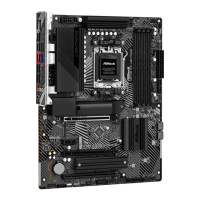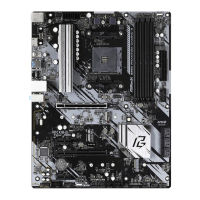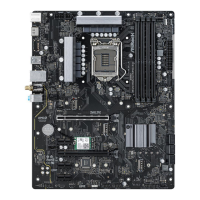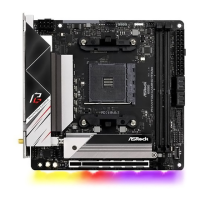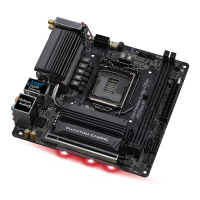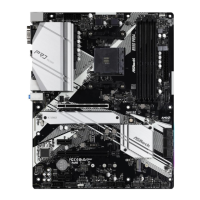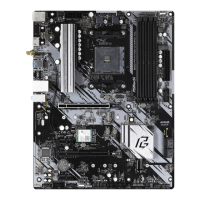48
is motherboard is equipped with AMD USB BIOS Flashback feature that allows you to update
BIOS without powering on the system.
USB Drive Requirements
e USB drive that is used for the BIOS update feature should meet the following requirements:
• USB 2.0 only
• Capacity up to 32GB
• Must be formatted as FAT16 or FAT32.
Root Directory Files
In the root directory there are two required les:
• BIOSUBU.BIN (required)
• PSPBIOS.IMG (required)
To use the USB BIOS Flashback function, please follow the steps below.
1. Download the latest BIOS le and BIOSUBU.BIN le from ASRock's website:
http://www.asrock.com.
2. Copy the BIOS le to your USB ash drive. Please make sure the le system of your USB ash
drive must be formatted as FAT16 or FAT32.
3. Extract BIOS le from the zip le.
4. Rename the le to “PSPBIOS.IMG”. Save it and BIOSUBU.BIN le to the root directory of X:
USB ash drive.
5. Install the CPU, CPU fan and DRAM on the motherboard. It is recommended to install the
CPU fan to CPU_FAN1 connector. Plug the 8-pin ATX 12V power connector and 24-pin ATX
power connector to the motherboard. en turn on the power supply's AC switch.
*ere is no need to power on the system.
6. en plug your USB drive to the USB BIOS Flashback port.
7. Press the BIOS Flashback Switch for about three seconds. en the system starts BIOS
ashing automatically and the LED starts to blink.
8. Wait until the LED stops blinking, indicating that BIOS ashing has been completed. is
takes around 2 and a half minutes. en the system restarts and enter BIOS.
*If the LED light turns solid green, this means that the BIOS Flashback is not operating
properly. Please turn o the power supply's AC switch to disconnect power for several minutes,
and turn it on again.
**If the LED does not light up at all, this means that the BIOS Flashback does not work. Please
turn o the power supply's AC switch to disconnect power for several minutes, and turn it on
again.
Before using the BIOS Flashback function, please suspend BitLocker and any encryp-
tion or security relying on the TPM. Make sure that you have already stored and
backup-ed the recovery key. If the recovery key is missing while encryption is active,
the data will stay encrypted and the system will not boot into the operating system. It
is recommended to disable fTPM before updating the BIOS. Otherwise an unpredict-
able failure may occur.

